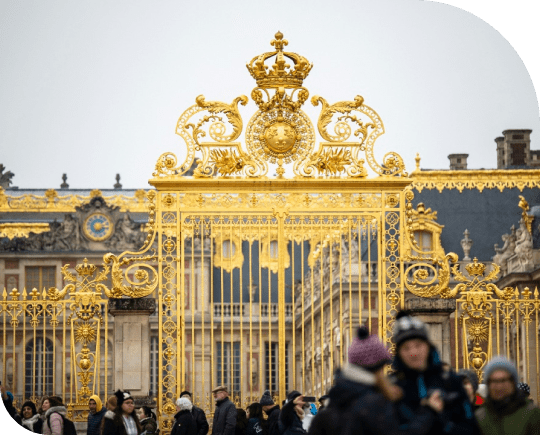Top 10 Paris Attractions
Must-have for 1-3 days trip
Discover the must-see attractions in Paris with our comprehensive guide to the city’s top 10 destinations. This event will take you through Paris’s cultural hotspots, providing insights into what makes each location unique.

1. Eiffel Tower
The Eiffel Tower, one of the most iconic landmarks in the world, stands proudly in the heart of Paris, France. Its intricate iron lattice design and towering height make it a symbol of architectural genius and cultural significance. Whether you’re a history buff, an architecture enthusiast, or simply a curious traveler, the Eiffel Tower offers a fascinating glimpse into the past and present of Parisian heritage.
Constructed between 1887 and 1889 as the entrance arch for the 1889 Exposition Universelle (World’s Fair), the Eiffel Tower was designed by the French engineer Gustave Eiffel. Initially met with skepticism and criticism from many prominent artists and architects, the tower quickly proved its detractors wrong. The structure was completed in just over two years, a remarkable feat considering its size and complexity.

Discover these Top-rated Eiffel tower experiances
2. Louvre Museum
The Louvre Museum in Paris, France, is one of the world’s largest and most visited art museums, renowned for its vast collection of art and historical artifacts. Originally constructed as a fortress in the late 12th century, the Louvre was transformed into a royal palace in the 16th century before becoming a public museum during the French Revolution. Its iconic glass pyramid entrance, designed by architect I. M. Pei, was inaugurated in 1989 and has since become a symbol of modernity and transparency in contrast to the museum’s historic façade. The Louvre’s collection spans over 9,000 years of history, featuring masterpieces such as Leonardo da Vinci’s “Mona Lisa,” Eugène Delacroix’s “Liberty Leading the People,” and the ancient Greek statue of the “Venus de Milo.”
Visitors from around the globe flock to the Louvre not only to view its priceless artworks but also to marvel at its architectural beauty and immerse themselves in the depth of human creativity and history encapsulated within its walls.
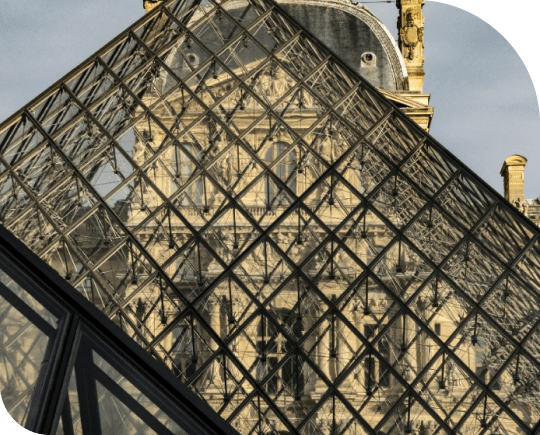
Discover these Top-rated Louvre Museum experiances
3. Notre Dame Cathedral
Notre Dame Cathedral, perched on the Île de la Cité in Paris, is a masterpiece of Gothic architecture and a symbol of French cultural heritage. Construction of the cathedral began in 1163 under the reign of King Louis VII and was largely completed by 1260. Renowned for its impressive façade, intricate stained glass windows, and towering spires, Notre Dame has been a central figure in the religious and historical tapestry of France. The cathedral’s stunning rose windows and sculpted gargoyles contribute to its reputation as a breathtaking example of medieval craftsmanship.
Throughout its history, Notre Dame has been the site of numerous significant events, including the coronation of Napoleon Bonaparte and the beatification of Joan of Arc. However, the cathedral faced severe damage from a devastating fire in April 2019, which destroyed much of its roof and spire. Despite this, restoration efforts are underway to restore Notre Dame to its former glory, ensuring that future generations can continue to experience and appreciate its architectural splendor and historical importance.

Discover these Top-rated Notre Dame experiances
4. Arc de Triomphe
The Arc de Triomphe, located at the western end of the Champs-Élysées in Paris, stands as a powerful symbol of French national pride and history. Commissioned by Napoleon Bonaparte in 1806 to celebrate his victory at Austerlitz, the monument honors those who fought and died during the French Revolutionary and Napoleonic Wars. Completed in 1836, it features detailed sculptures and reliefs of heroic battles, with the names of French generals and battles inscribed on its surfaces.
Beneath the arch lies the Tomb of the Unknown Soldier, added in 1920 to honor the fallen of World War I. An eternal flame burns here, symbolizing France’s enduring respect for those who sacrificed their lives. The Arc de Triomphe remains a focal point for national ceremonies, such as Bastille Day parades and Armistice Day commemorations, linking France’s past with its present and fostering a sense of unity and remembrance.
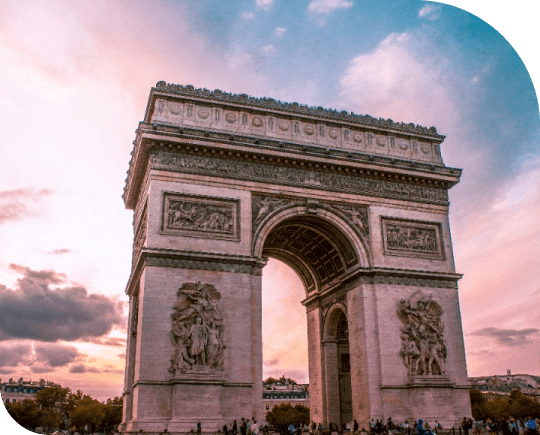
Discover these Top-rated Arc de Triomphe experiances
5. Latin Quarter
The Latin Quarter, located on the left bank of the Seine River in Paris, is renowned for its vibrant intellectual and cultural atmosphere. Home to the Sorbonne University, one of the oldest universities in Europe, the Latin Quarter has been a hub of academic life since the Middle Ages. Its name derives from the Latin language, which was widely spoken by students and scholars in the area. The quarter is characterized by its narrow, winding streets, historic buildings, and a lively mix of bookshops, cafes, and theaters that reflect its scholarly heritage.
In addition to its academic significance, the Latin Quarter boasts numerous historical and cultural landmarks. The Pantheon, a neoclassical mausoleum, houses the remains of prominent French figures such as Voltaire, Rousseau, and Victor Hugo. The Luxembourg Gardens offer a peaceful retreat with beautifully manicured lawns and gardens. The Latin Quarter’s vibrant nightlife, with its array of restaurants, bars, and jazz clubs, attracts both locals and tourists, making it a dynamic and enduring part of Parisian life.
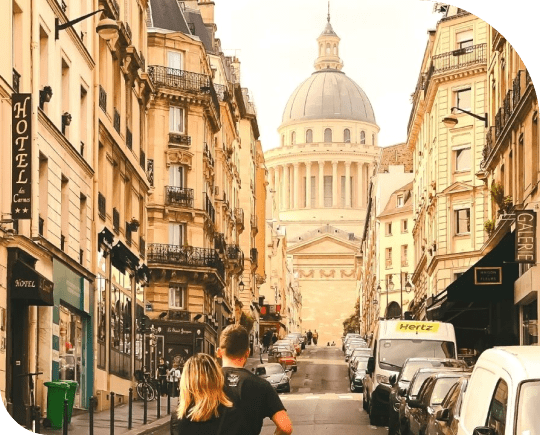
Discover these Top-rated Latin Quarter experiances
6. The Pantheon
The Pantheon, located in the Latin Quarter of Paris, is a magnificent neoclassical mausoleum that honors some of France’s most distinguished citizens. Originally built as a church dedicated to St. Genevieve, the patron saint of Paris, its construction began in 1758 under the direction of architect Jacques-Germain Soufflot. Completed in 1790, the Pantheon was later repurposed during the French Revolution to serve as a mausoleum for the nation’s heroes.
The Pantheon’s grand façade, inspired by classical Greek architecture, features Corinthian columns and a domed roof, creating an imposing and elegant structure. Inside, the vast interior is adorned with frescoes and sculptures depicting significant moments in French history. The crypt beneath the Pantheon holds the remains of notable figures such as Voltaire, Rousseau, Victor Hugo, Émile Zola, and Marie Curie. As a symbol of national pride and reverence, the Pantheon stands as a testament to the enduring legacy of those who have shaped French culture, science, and politics.

Discover these Top-rated The Pantheon experiances
7. Montmartre
Montmartre, perched on a hill in the 18th arrondissement of Paris, is a historic district known for its artistic heritage and bohemian atmosphere. Once a village outside the city, Montmartre became a magnet for artists in the late 19th and early 20th centuries, drawing luminaries such as Picasso, Van Gogh, and Toulouse-Lautrec. Its winding cobblestone streets, charming cafes, and vibrant nightlife capture the essence of Parisian creativity and free spirit.
At the heart of Montmartre stands the Basilica of the Sacré-Cœur, a stunning white-domed church that offers breathtaking views of the city from its steps. The Place du Tertre, a bustling square nearby, is filled with artists showcasing their work, continuing Montmartre’s legacy as an artistic hub. The district’s unique blend of history, culture, and panoramic vistas makes it a must-visit destination for those seeking to experience the timeless charm of Paris.
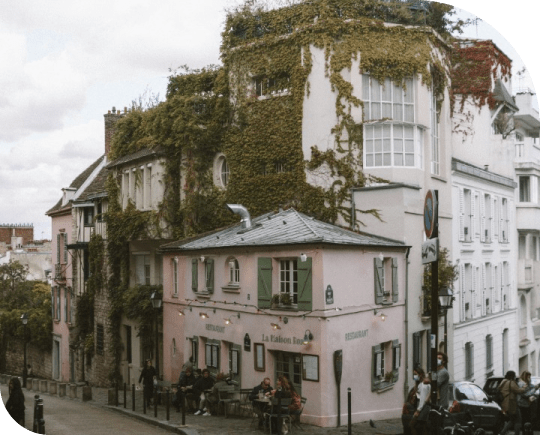
Discover these Top-rated Montmartre experiances
8. Les Invalides
Les Invalides, located in the 7th arrondissement of Paris, is a grand complex that serves as a testament to France’s military history and heritage. Commissioned by King Louis XIV in 1670, it was originally built as a hospital and retirement home for war veterans. Today, it houses several museums and monuments, including the Musée de l’Armée, one of the largest military museums in the world.
The most notable feature of Les Invalides is the Dome Church (Église du Dôme), an exquisite example of French Baroque architecture with its striking golden dome. Beneath this dome lies the tomb of Napoleon Bonaparte, the legendary French emperor, surrounded by other notable military leaders. Les Invalides not only commemorates France’s illustrious military past but also serves as a place of reflection and honor for those who have served the nation.

Discover these Top-rated Les Invalides experiances
9. Champs-Élysées
The Champs-Élysées, stretching 1.9 kilometers from the Arc de Triomphe to the Place de la Concorde, is often hailed as the most famous avenue in Paris. This grand boulevard is renowned for its theaters, cafes, luxury shops, and historic significance. Originally laid out in the 17th century, it has evolved into a symbol of Parisian elegance and culture, attracting millions of visitors each year.
Lined with lush trees and gardens, the Champs-Élysées is a hub of activity, especially during major events such as Bastille Day parades and the final stage of the Tour de France. The avenue’s vibrant atmosphere is further enhanced by its proximity to key landmarks, including the majestic Arc de Triomphe at its western end and the expansive Place de la Concorde to the east. A stroll down the Champs-Élysées offers a quintessential Parisian experience, blending history, luxury, and urban charm.
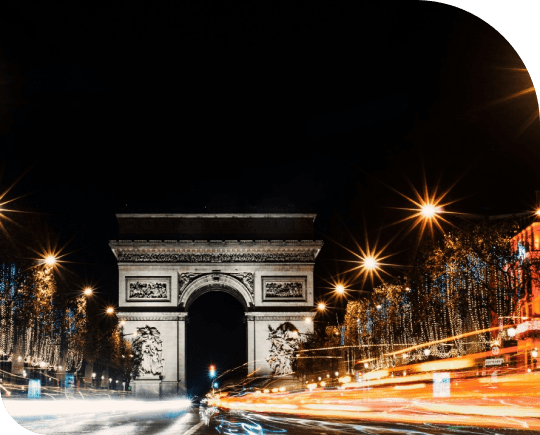
Discover these Top-rated Champs-Élysées experiances
10. Palace of Versailles
The Palace of Versailles, located just outside of Paris, is a stunning example of French Baroque architecture and a symbol of royal opulence. Originally a hunting lodge built by Louis XIII, it was transformed and expanded into a grand palace by his son, Louis XIV, in the late 17th century. The palace served as the principal royal residence of France until the French Revolution, reflecting the absolute power and wealth of the French monarchy.
The grandeur of Versailles is evident in its lavish interiors and expansive gardens. Highlights include the Hall of Mirrors, a breathtaking gallery adorned with 357 mirrors and crystal chandeliers, and the King’s Grand Apartments, richly decorated with frescoes and gilded woodwork. The gardens, designed by André Le Nôtre, feature meticulously manicured lawns, elaborate fountains, and ornamental lakes. Today, the Palace of Versailles is a UNESCO World Heritage site, attracting millions of visitors who come to marvel at its architectural splendor and historical significance.
